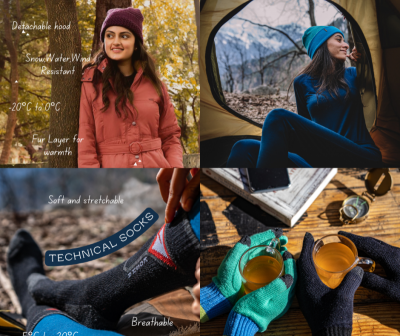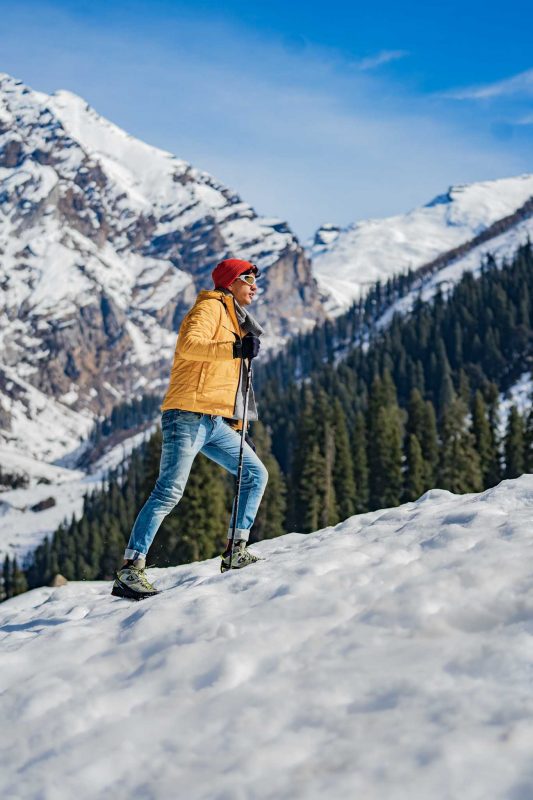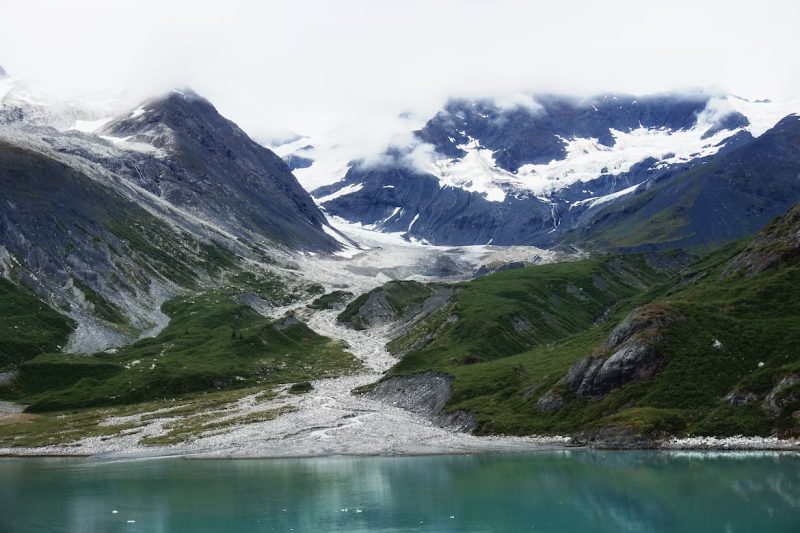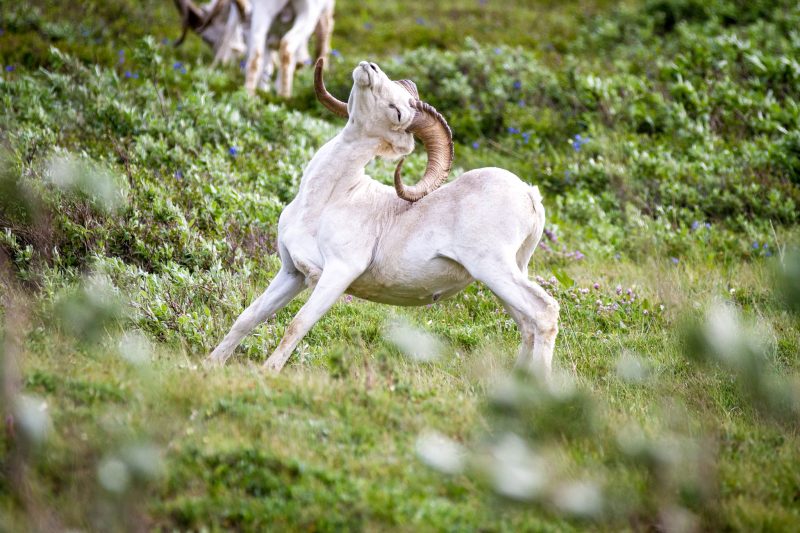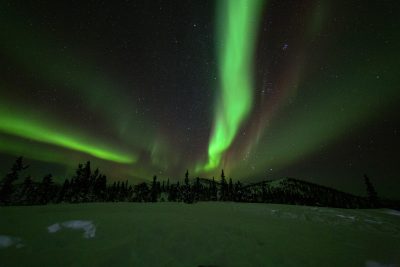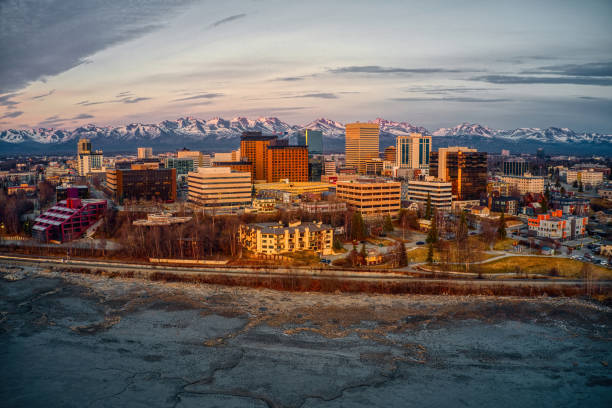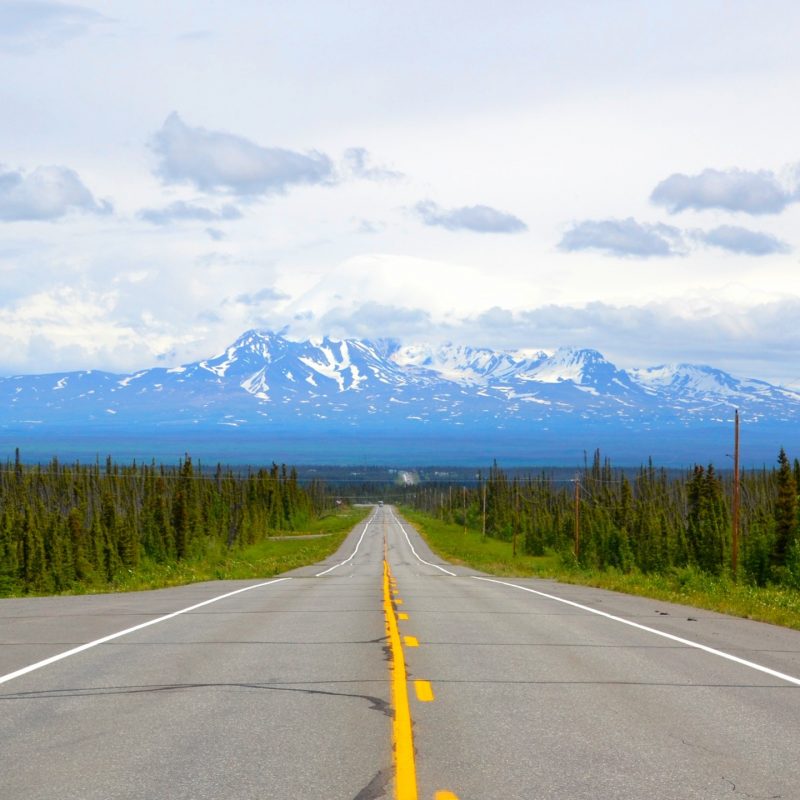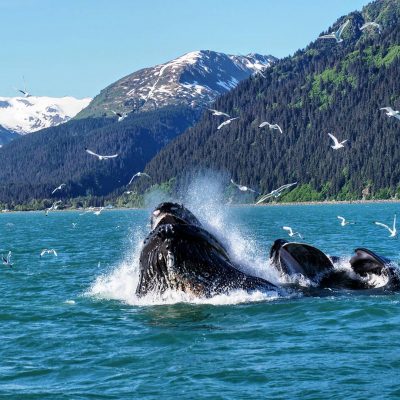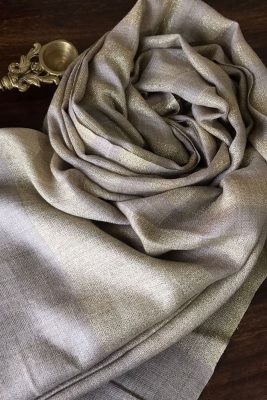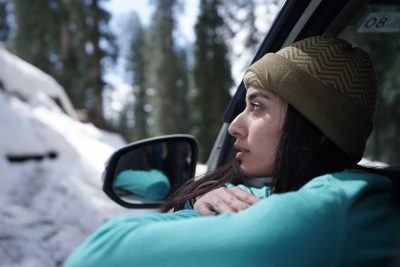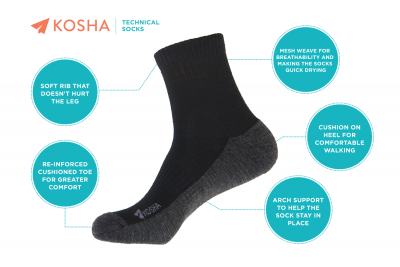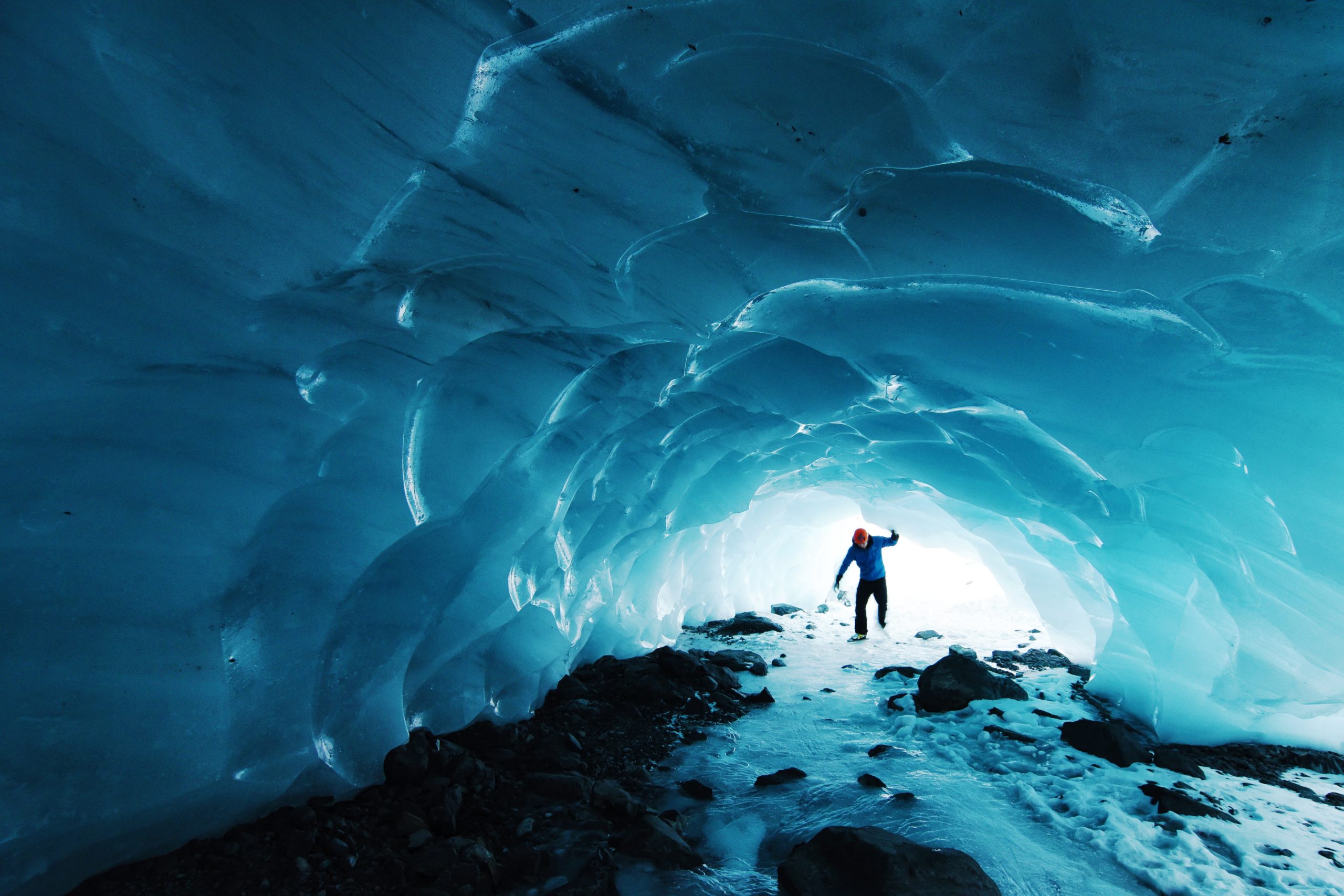
Are you planning a trip to Alaska? If so, you’ll need to pack the right clothes to stay warm and comfortable in the state’s extreme weather.
Alaska has long, cold winters and short, mild summers. The weather can change quickly, so it’s important to be prepared for anything.
In this guide, we’ll cover what to wear in Alaska for all seasons. We’ll also recommend some stylish and functional clothes that will keep you warm and dry.
Whether you’re hiking, camping, or just exploring the city, we’ve got you covered.
Table of Contents
Alaskan Winter Climate
Alaska’s weather is known for being unpredictable, thanks to its diverse landscape which includes rugged mountains, icy coastlines, and vast tundra’s. Temperatures can fluctuate greatly depending on the location and time of year, making it essential to dress in layers when exploring the Last Frontier.
Instead of focusing on average temperatures, it’s better to think about building a versatile wardrobe that can adapt to various weather conditions. This means choosing clothing items that can be easily added or removed as needed, such as lightweight base layers, insulating mid-layers, and waterproof outerwear.
For example, imagine hiking through snow one minute and walking through a sunny forest the next. In this scenario, having the ability to shed layers quickly would be beneficial. Or, if you find yourself caught in an unexpected rainstorm, having a waterproof jacket would be a lifesaver.
Don’t worry, we’ll help you dress for Alaska’s unpredictable weather. With the right layers, you’ll be warm, dry, and stylish no matter what the forecast says.
Kosha winter clothes for women
Start with a cozy base layer, add a comfortable middle layer, and top it off with a waterproof outer layer. Don’t forget to bring waterproof boots as well to keep your feet happy. Accessories like beanies, gloves, and scarves are not just for warmth, but also serve as your secret weapons against Alaska’s tricky weather.
With the right clothes, Alaska’s changing weather won’t slow you down. So go out there, enjoy the amazing sights, and create lasting memories on your adventure in style! Now, before we chat about what to wear in Alaska, let’s understand its unique weather.
Read more: What to wear in Georgia in Winter
Alaskan Weather
Predicting Alaska’s winter can be challenging, similar to solving a puzzle. Simply looking at the average temperature isn’t enough to fully understand it. The perception of coldness depends on the specific location and time.
For instance, in January, Anchorage experiences an average temperature of approximately 18°F. However, the actual temperature can range from a frigid -20°F to a slightly warmer 30°F!
Why is there such a significant difference? Well, due to Alaska’s vast size, it encompasses diverse landscapes. The mountainous regions are colder compared to the coastal areas, and the central part is even chillier than the southern part.
The weather can change really fast too. One day can be sunny, the next snowy and icy.
If you’re curious, here’s what to expect for average temperatures in Alaska each month:
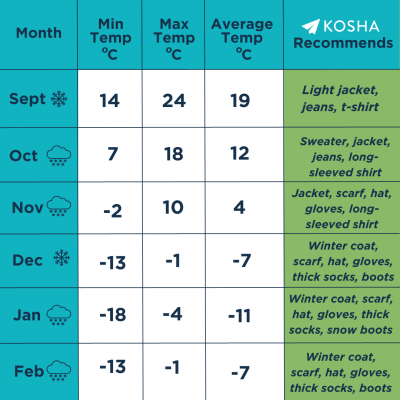
So, to stay warm in Alaska’s winter, wear lots of layers. That way, you can add or take off clothes as needed.
Check out Kosha’s winter wear collection here!
Exploring Alaska’s Natural Wonders with the Right Attire
Alaska’s breathtaking natural wonders invite adventurers to immerse themselves in its awe-inspiring landscapes. Whether you’re gazing at majestic glaciers, traversing towering mountains, or witnessing the ethereal Northern Lights, the right attire is essential to fully appreciate these marvels. Let’s delve into how to dress appropriately while exploring Alaska’s remarkable destinations.
Glacial Adventures and Navigating Glacial Majesty: Dressing for Alaska’s Dynamic Landscapes
Standing amidst Alaska’s towering glaciers and mountains offers a profound experience, but it’s an encounter with challenging conditions. Glacial ice and rugged terrains demand clothing that provides both warmth and protection against the elements, allowing you to embrace these icy giants comfortably.
To face the ever-changing climate, begin with a moisture-wicking base layer. Opt for top-quality materials like merino wool, which keeps sweat at bay, ensuring your comfort during physical activities.
Men’s Sky Blue Full Sleeve Thermal
For your mid layer, select an insulating garment, such as a fleece jacket or down vest. These pieces trap warmth, crafting a cozy barrier against the chilly air that envelops the glacial landscapes.
Your outer layer should be a bastion against the elements – waterproof and windproof. Seek out a dependable parka or puffer jacket, shielding you from snow and moisture. This outer shell stands as your frontline defense in the face of Alaska’s formidable weather.
Accessories are essential players. Remember to don gloves, a beanie, and a scarf to protect your extremities and maintain warmth amidst icy temperatures.
As you transition to Glacier Bay National Park, where towering glaciers and serene fjords command attention, your clothing strategy shifts. The glacial environment brings sudden temperature changes into play, especially as you explore the waterways.
Puffer Jacket for men by Kosha
Craft your outfit with a base layer primed for active water activities – one that efficiently keeps you dry. Layer on an insulating fleece or down vest for snug comfort against the brisk breezes encountered along the way. With a waterproof outer layer as your stalwart companion, you’re ensured dryness and warmth, enabling you to fully immerse yourself in the mesmerizing spectacle of glaciers calving into the sea.
Whether navigating rugged terrains or glacial majesties, your attire serves as more than just clothing; it’s a thoughtful approach to experiencing Alaska’s dynamic landscapes. With layers tailored to the environment, you’re empowered to delve into the heart of these natural wonders with comfort and confidence.
Denali National Park and Preserve: Conquering the Tallest Peak
Home to Denali National Park, the highest peak in North America, this untamed wilderness offers a diverse range of wildlife, exhilarating hikes, and the opportunity for peaceful wildlife observation.
The weather can change dramatically as you ascend into the heart of this majestic realm due to the park’s elevation.
To prepare for your adventures in Denali, it’s important to start with a reliable base layer that wicks away moisture, especially during strenuous hikes.
Additionally, choose a mid layer that provides both warmth and mobility, allowing you to navigate rocky trails effortlessly.
Finally, don’t forget to bring a waterproof shell to protect yourself against the unpredictable mountain weather and fully embrace the grandeur of Denali.
Marveling at the Northern Lights
The Northern Lights, also known as the aurora borealis, are a natural light display seen in high-latitude regions. They occur when charged particles from the sun collide with the Earth’s atmosphere, releasing energy in the form of light.
The colors of the Northern Lights depend on the type of gas being excited by the collision. Green and red are the most common colors, but they can also appear in blue, yellow, purple, and white.
The Northern Lights are most visible in winter, but can be seen year-round depending on solar activity. They are best observed in areas with little light pollution, such as national parks. The enchanting spectacle of the Northern Lights is a highlight of any Alaska journey.
To stay warm and cozy while experiencing this celestial display, it is important to dress in appropriate layers and clothing. A thermal base layer can retain body heat, while a well-insulated jacket or coat will lock in warmth.
Accessories like beanies, gloves, and scarves can provide additional insulation without sacrificing comfort.
Urban Explorations: Anchorage and Beyond
Anchorage, the largest city in Alaska and the fifth-largest city in the United States by area, sits in the south-central part of the state, by the Cook Inlet. It serves as a gateway to Alaska’s wilderness, drawing outdoor enthusiasts with its abundance of recreational activities like hiking, camping, fishing, and skiing.
Founded as a railroad construction camp in 1914, Anchorage experienced rapid growth following World War II and has since become a prominent hub for business, education, and transportation.
When exploring Anchorage and its surrounding areas, you can experience the perfect balance of urban comforts and natural beauty. From parks and museums to outdoor adventures, there is a lot to explore.
Dressing comfortably with adaptable clothing is key as you transition between these different attractions. A stylish and functional mid layer, like a versatile jacket, helps keep you cozy during city strolls.
Additionally, make sure to have a reliable outer layer that can shield you from sudden rain showers, making your city escapades just as enjoyable as your wilderness excursions.
Wrapping Wilderness Around You: Wrangell-St. Elias and Beyond
Wrangell-St. Elias National Park and Preserve, located in Alaska, is the largest national park in the United States and the second-largest protected area globally. Spanning over 13 million acres, it boasts majestic mountains, pristine glaciers, lush forests, and diverse wildlife.
The park is renowned for its abundance of wildlife, including grizzly bears, wolves, moose, caribou, and Dall sheep. It is also home to some of North America’s tallest mountains, such as Mount Wrangell, the second-highest peak in the United States.
Aside from its natural wonders, Wrangell-St. Elias National Park is a popular destination for outdoor enthusiasts. Activities like hiking, camping, fishing, and mountaineering are enjoyed by many. Additionally, the park attracts scientists and researchers who study its unique ecosystem.
When exploring the vast beauty of Wrangell-St. Elias National Park, it is essential to dress appropriately. The park’s rugged terrain and ever-changing weather demand attire that blends functionality with endurance.
Stay comfortable during strenuous climbs with a base layer that wicks sweat. The mid layer provides insulation and warmth against varying conditions. Finally, an outer shell safeguards you against the wild elements, allowing you to fully embrace the park’s magnificence.
Kenai Fjords National Park: Coastal Adventures Await
Kenai Fjords National Park in Alaska offers unforgettable experiences with its rugged coastline, ice-carved fjords, and vibrant marine life. Whether you’re taking a boat tour or going for invigorating hikes, versatile clothing is essential for this destination.
The park covers an area of 669,984 acres on the Kenai Peninsula, south-central Alaska, west of the town of Seward. It is named after the numerous fjords carved by glaciers from the Harding Icefield, one of the largest icefields in the United States.
With at least 38 glaciers, including Bear Glacier, the park provides breathtaking views and is home to various wildlife such as whales, seals, sea lions, bears, wolves, moose, and Dall sheep.
Activities like kayaking, hiking, camping, and fishing are popular here. Dressing in moisture-wicking base layers, cozy mid layers, and a waterproof shell will ensure your comfort while immersing yourself in the park’s enchanting vistas.
Embracing Sustainability
While exploring Alaska’s natural wonders, it is essential to consider the impact of climate change on these delicate ecosystems. Dressing appropriately is not just for personal comfort but also for showing respect for the environment and its preservation.
Choose clothing brands that prioritize sustainable materials and ethical practices. By opting for eco-friendly attire, you contribute to preserving Alaska’s natural treasures for future generations. If you are wondering what to wear in alaska to stay eco-friendly. Then, you can check out Kosha’s winter clothes, as our clothes are eco-friendly and lightweight.
Climate Change and Glacial Melting: Safeguarding Alaska’s Splendor
When preparing to explore Alaska’s wonders, it’s important to address the impact of climate change and glacial melting. The breathtaking landscapes are under threat due to warming temperatures, making responsible choices even more crucial.
Glacial retreat is a visible sign of climate change’s toll on Denali’s peaks. The glaciers that have shaped these vistas are diminishing rapidly. Sustainable clothing not only suits the weather but also supports the preservation of these natural marvels.
Glacier Bay’s ice formations are also changing, highlighting the need for ethical travel choices. Sustainable attire aligns with the mission of protecting Glacier Bay’s delicate balance.
In Kenai Fjords, warming oceans are shifting marine habitats and affecting local wildlife. Choosing eco-friendly clothing contributes to the conservation of the ecosystems you’ll encounter.
Even urban centers like Anchorage and Juneau feel the effects of climate change. Be aware that your clothing choices can reflect your commitment to mindful exploration and support for these communities in a changing world.
Wrangell-St. Elias’ rugged wilderness is not immune to the effects of glacial recession. Your attire can symbolize solidarity with the park’s preservation efforts. Talkeetna’s charm and Chugach’s beauty are linked to the broader challenge of climate change.
By dressing consciously, you can have a greater impact and contribute to the fight to protect these extraordinary landscapes.
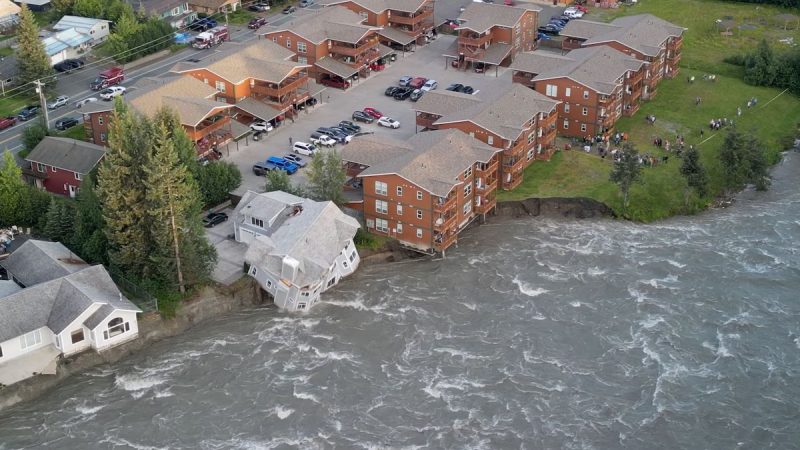
Twowildhearts, via Reuters
Check out Kosha’s winter jackets for men here | women here
Accessories for Comfort and Functionality
When you’re figuring out what to wear in Alaska, don’t forget about accessories! These are extra things you wear to stay comfortable and do things easily.
Winter accessories are like the secret layer of clothing that keeps you extra warm. They include gloves, mittens, scarves, shawls, socks, beanies, earmuffs, and more.
These accessories can really make a difference in how enjoyable your trip is.
Check out Kosha accessories for women here | men here
Gloves for Warm and Safe Hands
Let’s talk about gloves. Gloves and mittens are important because they keep your hands warm when it’s really cold outside. But they’re not just for warmth – they also help you hold things better because your hands can get really numb in super cold places.
Scarves, Shawls, and Staying Warm
These cover your neck, which is usually not covered by your other clothes. This extra layer is really helpful because it keeps the cold air out and keeps your body heat in.
Hats, Beanies, and Earmuffs for Your Head
These keep your head and ears warm, and your ears are actually really sensitive to the cold. If you don’t want to wear a hat, even putting cotton balls in your ears can help you feel warmer and more comfortable.
Cozy Socks for Happy Feet
Cold feet are no fun, so wearing the right socks and shoes is really important. The right socks can protect your feet from blisters and make walking much more comfortable.
Kosha’s special socks made from merino wool are designed to keep your feet cozy without causing blisters.
Shoes to protect your feet from snow
When wondering what to wear in Alaska for shoes, remember these shoe tips: Snow type matters – deep snow needs warm, non-slip shoes. Cold weather? Insulated shoes are key. Lots of walking? Get supportive shoes. Your preferences count too – cushioning or feeling the ground. Choose wisely for your Alaskan journey!
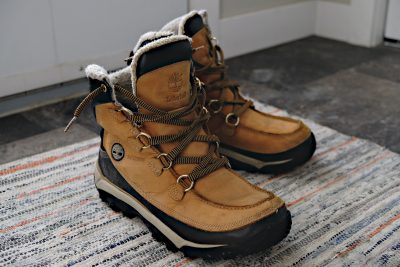
Photo by Andrew George – Unsplash
So, when you’re getting ready for your Alaskan adventure, remember that these accessories are your buddies for staying warm and comfy, no matter how cold it gets!
Woolen Bottoms – Snow Pants: Staying Dry in the Snow
When it’s snowy, don’t wear clothes that soak up water, like denim. Instead, wear special snow pants. They let you move around easily, like when you’re skiing. Kosha’s snow pants have cool features like vents and comfy lining. They’re good when it’s 5 to -20 degrees Celsius outside.
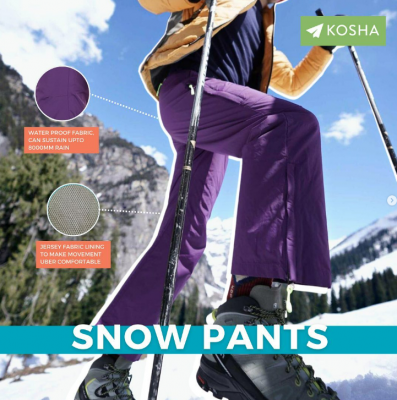
Check out Kosha’s accessories for men here | women here
What to wear in Alaska to Beat the Bugs
Bug Repellent: Use bug spray with DEET or Picaridin. These work best against mosquitoes and bugs.
Cover Up: Wear long clothes to protect your skin from bug bites. You can check out Kosha’s long thermal tops for both men and women for this.
Apply Repellent: Put bug spray on your exposed skin, even on your ears, neck, and ankles.
Bug Nets: If you’re camping or in a buggy area, a bug net can be a big help.
Timing Matters: Avoid being outside during dawn and dusk when mosquitoes are most active.
FAQ’s
Can you wear jeans in Alaska?
Yes, you can wear jeans in Alaska, but it depends on the time of year and the activities you plan on doing. In the summer, when the temperatures are mild, jeans can be a comfortable and versatile option.
What clothes should you wear to Alaska?
Wear layers of moisture-wicking, breathable clothing that can be easily added or removed to adjust to the varying temperatures.
Do you need sunglasses in Alaska?
Yes, you need sunglasses in Alaska, especially during the summer months when the sun is strong and the glare is intense.
What kind of shoes do you wear in Alaska?
Hiking boots or waterproof winter boots are recommended for exploring Alaska’s diverse terrain and unpredictable weather.
Do you need a raincoat in Alaska?
Yes, you need a raincoat in Alaska, especially during the wet season from May to September.
Conclusion
In conclusion, dressing for an Alaskan adventure involves more than just staying warm. It is a commitment to sustainability and conservation, with each article of clothing reflecting eco-friendliness and ethical values. By wearing these garments, you contribute to the fight against climate change and the protection of Alaska’s precious resources.
Allow your attire to initiate discussions about responsible choices as you explore the wonders of Alaska. Engage fellow adventurers in conversations about sustainability and the preservation of nature. With each layer you put on, you embrace the history, nature, and future of this remarkable place.
Preparing for Alaskan weather is akin to solving a puzzle. From base layers to outerwear, these layers shield you from the cold. Choose wisely for a blend of comfort and style, whether you’re hiking mountains or strolling through the city. Your clothing ensures you can fully enjoy the adventure, feeling cozy and snug while also demonstrating your respect for the environment.
For any queries related to wearing thermals, base layers, or winter wear in general, visit Kosha’s store and get a free consultation! While you’re at it, check out Kosha’s website for the wide range of thermals and jackets available at Kosha.
This blog article is written by Kosha Team Member – Kauravki Bansode
